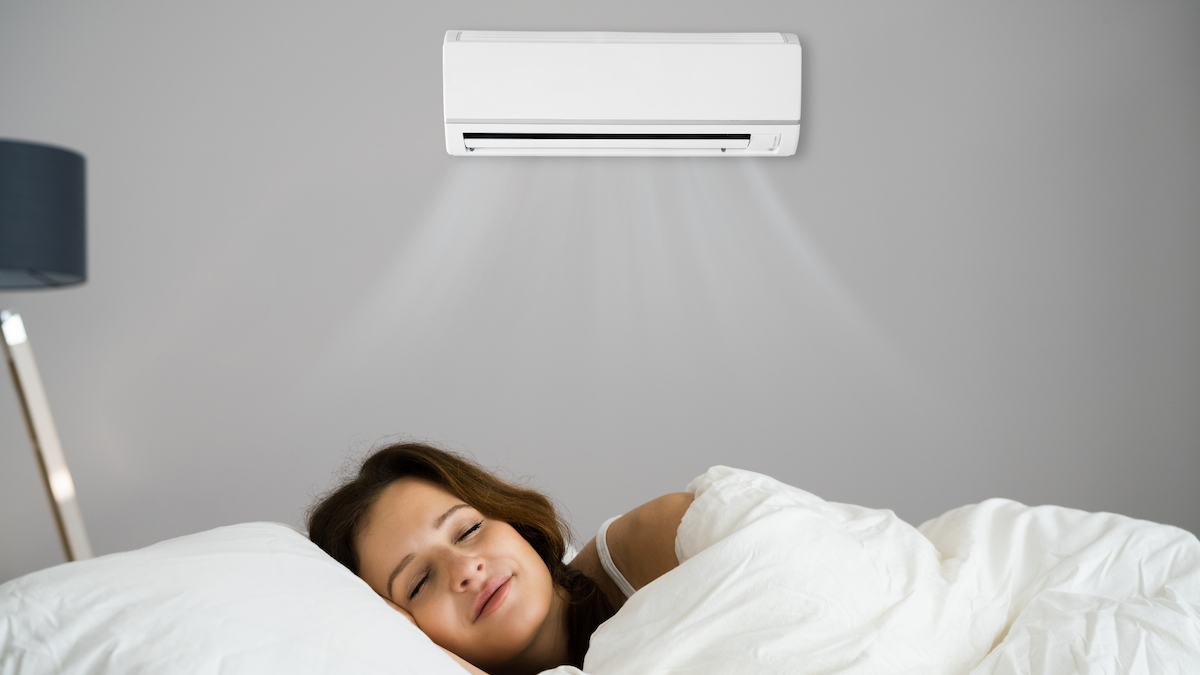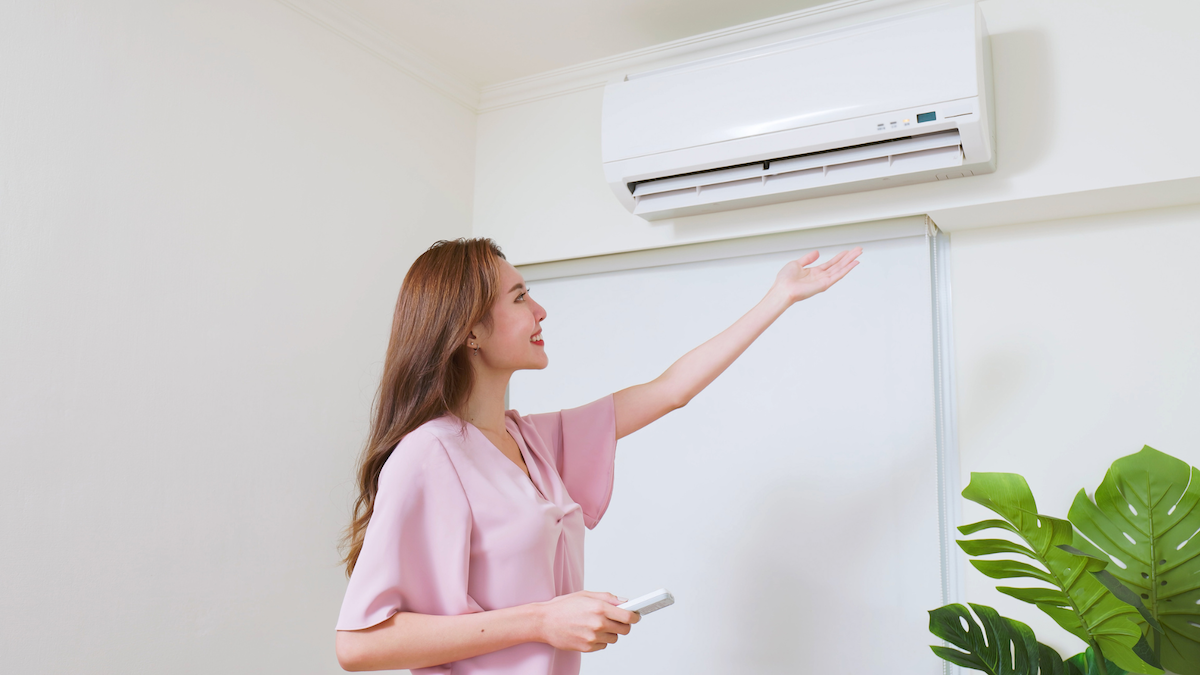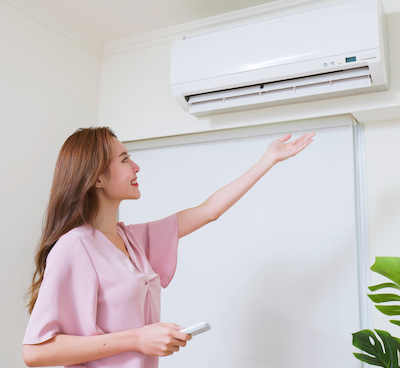Air conditioners are a common fixture in homes and offices today, providing relief against the scorching heat of summers. While one cannot negate the health benefits associated with them, air conditioners may also impact your respiratory health. Here, we’ll discuss some of the most surprising ways air conditioning could affect your breathing—from easing allergy symptoms to possibly increasing the risk for respiratory infections. We will also cover some tips on how to choose the right air conditioner and how to maintain it properly to reduce potential health risks from having the unit. If you encounter issues, timely air conditioning repair can ensure your unit functions efficiently and safely. Whether you plan to buy an air conditioner or strive to know how your present unit may be affecting your health, read on.
How air conditioners work
Air conditioners work via the process of a refrigeration cycle. In principle, this refrigeration process is divided into four steps: compression, condensation, expansion, and evaporation. Allow me to walk you through each one in detail so that we can understand how an air conditioner really works to create that cool, comfortable environment.

First, a gaseous refrigerant is compressed by a compressor, increasing the pressure and hence its temperature. The compression starts the cool energy effect. Then, the produced high-pressure refrigerant enters the condenser, which gives out heat to the surrounding air and changes into a high-pressure liquid.
The high-pressure liquid refrigerant then passes through the expansion valve or capillary tube, where its pressure suddenly drops. This sudden loss of pressure causes it to flash the liquid refrigerant into a low-pressure and, thus, low-temperature gas. In so doing, this takes a lot of heat from the air around the coil, hence creating a cooling effect.
The refrigerant gas is then at low pressure and low temperature when it reaches the evaporator coil, which absorbs even more heat from the warm indoor air. As the refrigerant absorbs heat, it re-evaporates back into a gas with low pressure.
Again, the low-pressure gas refrigerant is compressed by the compressor, and the cycle starts all over. This continuous refrigeration cycle removes heat from the indoor air, efficiently cooling the room to provide relief from the scorching summer heat.
Air conditioning and respiratory infections
Air conditioners can promote respiratory diseases by creating an ideal environment in which viruses and allergens can proliferate. The cool dry air of the air conditioner has the effect of drying the mucous membranes in the nose and throat, hence allowing entrance into the body to viruses. Further, in a closed space, airborne contaminants that may include viruses, bacteria, and allergens are easily spread through the recirculation of air. Increased circulation can increase the risk of respiratory infections, asthma attacks, and allergic reactions.
Children and elderly people can easily be affected by the injurious respiratory results of air conditioning. Most of the time, the immune system is not very strong in their case; therefore, they are more prone to infections. In addition, elderly people might be suffering from some respiratory disease that could be aggravated by the cold and dry air coming out from these air-conditioning systems.
These air-conditioning systems can further lead to the risk of Legionnaires’ disease. The legionella bacterium causing the illness thrives in warm, stagnant water that lurks in air-conditioning units. Such bacteria may become aerosolized into the air and cause respiratory infection if a system is not properly maintained or cleaned.
These risks should therefore be recognised and proper measures taken to reduce these risks. Proper maintenance, servicing of the air conditioner, proper humidity, and good ventilation can prevent respiratory problems caused due to air-conditioning.
Air conditioning and asthma
This means it literally is a lifesaver for asthmatic patients. With air conditioning, control of temperature and humidity in the room could be precisely done to reduce the possibility of asthmatic attacks by keeping the respiratory system fit.
Asthma is a chronic respiratory condition characterized by inflammation of the airways and their narrowing. This already irritable, narrow air way becomes oversensitive to various small particles, from allergens to dust mites or pet hair, even ordinary changes in temperature and humidity. Air conditioners significantly reduce these triggers by keeping cool, dry, and constant temperature conditions, which may lead to multiple asthma attacks.
The cooling effect of air conditioning relaxes the airway muscle, constricting airways and releasing air out to enable breathing. Additionally, air conditioners remove moisture from the air, controlling mold growth and dust mites that are major asthma triggers. Most modern air conditioners are also fitted with air filters that trap and get rid of allergens and irritants in the air, enhancing air quality further and suppressing symptoms of asthma.
Air conditioning and allergies
Air conditioners may be considered one of the factors involved in quality indoor air and can significantly impact those who have allergies. They can noticeably decrease a person’s discomfort by reducing both temperature and humidity, but it requires attention to the variants of advantages versus disadvantages.
These air conditioners with filters can trap and remove most of the allergens, be it pollen, dust, or animal dander, from its circulation in the air. The filters provide a barrier that retains the allergen and prevents it from going into circulation in the atmosphere, thereby causing allergic reactions. However, these filters need to be changed frequently to serve their purpose. Clogged and dirty filters will foster bacteria and mold, which exacerbate allergy symptoms.
On the negative side, some allergies can be aggravated by the cool and dry air brought about by an air conditioner. For instance, if one is allergic to dust mites or even pet dander, then such allergens may get more concentrated in the air. The reason behind this is that, with the presence of an air conditioner resulting in low humidity, such allergens are able to easily get airborne.
On the bright side, air conditioners can lead to the reduced proliferation of mold and mildew, very common allergy provokers. In this manner, by decreasing the level of humidity in the air, air conditioners render it highly unlikely for such microorganisms to procreate.
For those suffering from allergies, running an air purifier with an air conditioner more significantly improves indoor air quality. Since air purifiers are partially aimed at extracting hazardous particles, including allergens, from the air, integrating the work of both will help an allergy sufferer stay in a comfortable and almost allergen-free environment.

Choosing the right air conditioner
Consider the following factors while choosing an AC that will efficiently cool your space out of respiratory health risks. First, cooling capacity: This would be selected based on the size of your room or the area you would want to cool. Generally, this information is available in the Product Specifications and is measured in BTUs.
Ensure air quality for the healthy respiratory system by opting for that type of air conditioner. Ensure the presence of an air filter in the conditioner so that dust, pollen, and all other allergens may be trapped. Some designs of air conditioner can have ultra-violet lights that help kill bacteria and viruses, reducing the chance of developing respiratory illnesses.
Choose an air conditioner that has controls for temperature adjustment and humidity adjustment in order to maintain a comfortable and healthy environment. This feature will let you maintain an ideal balance so that it will not be too dry or too humid. Many state-of-the-art air conditioners come with programmable thermostats and humidity sensors for more precise management of these aspects.
For people with specific respiratory sensitivities, choosing an air conditioner that holds a high rating in energy efficiency is salient. Energy-efficient appliances often afford lower temperatures, primarily used by the device, thereby not stimulating respiratory conditions. Also, check the noise level of the air conditioner: excessive noise can serve as a significant sleep disturbance and negatively affect the spirit.
Knowing this, you can choose an air conditioner that will satisfy your cooling needs while reducing the potential harmful effects on your respiratory system.
Final thoughts
While air conditioners enhance comfort and well-being, it’s important to consider their impact on respiratory health and the environment. Recognizing potential drawbacks and taking appropriate measures can help maximize benefits while minimizing adverse effects.
Choosing energy-efficient models reduces energy consumption and lowers carbon emissions. Regular maintenance, such as filter cleaning and system inspections, ensures optimal performance and longevity.
Monitoring indoor air quality and humidity levels (30%-50%) prevents mold and dust mites, common respiratory triggers. Air purifiers can further improve indoor air by removing pollutants, allergens, and some viruses and bacteria.
For those with respiratory conditions like asthma and allergies, consulting a healthcare professional before using an air conditioner is advisable for personalized guidance.
By making informed choices, prioritizing energy efficiency, and maintaining units, we can enjoy air conditioning while protecting respiratory health and the environment.

